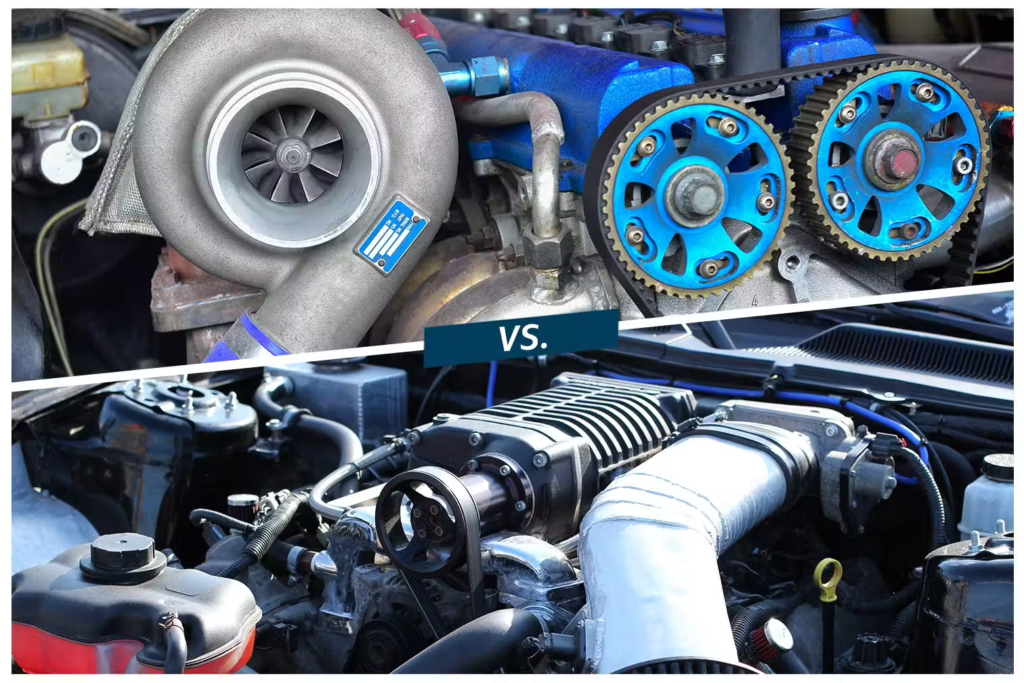
Turbocharging is a technology that has revolutionized modern automotive engineering, offering a powerful combination of enhanced performance and improved efficiency. By forcing more air into the engine’s combustion chamber, turbochargers enable vehicles to achieve greater power outputs without significantly increasing engine size. Understanding how turbocharging works and its impact on engine performance and efficiency can help drivers appreciate the benefits of this advanced technology.

1. How Turbocharging Works
A turbocharger is a device that increases an engine’s air intake, which in turn boosts its power output. It consists of two main components:
- The Turbine: Driven by exhaust gases from the engine, the turbine spins at high speeds, typically reaching up to 150,000 RPM. This spinning motion generates the necessary energy to power the compressor.
- The Compressor: The compressor draws in ambient air and compresses it before sending it into the engine’s combustion chamber. The increased air pressure allows the engine to burn more fuel and produce more power.
The process of turbocharging involves capturing exhaust gases that would otherwise be wasted, using them to drive the turbine, and subsequently increasing the engine’s air intake. This results in more efficient combustion and greater power output.
2. Performance Benefits of Turbocharging
Turbocharging offers several performance benefits:
- Increased Power: By compressing more air into the combustion chamber, a turbocharger enables the engine to produce more power without increasing its size. This allows for higher horsepower and torque, which translates to improved acceleration and overall performance.
- Enhanced Acceleration: Turbocharged engines can achieve quicker acceleration due to their ability to produce more power from the same engine displacement. This can result in faster 0-60 mph times and improved responsiveness.
- Reduced Turbo Lag: Modern turbochargers are designed to minimize turbo lag, which is the delay between pressing the accelerator and experiencing increased power. Advances in turbocharger technology, such as twin-scroll turbos and variable geometry turbos, have improved response times and overall driving dynamics.
3. Efficiency Improvements
In addition to boosting performance, turbocharging enhances fuel efficiency:
- Better Fuel Economy: Turbocharged engines can achieve better fuel efficiency compared to naturally aspirated engines with the same power output. By improving the combustion process and extracting more power from less fuel, turbochargers help reduce fuel consumption.
- Smaller Engine Size: Turbocharging allows manufacturers to use smaller engine displacements while still achieving high power outputs. Smaller engines are often lighter and more fuel-efficient, contributing to overall improvements in fuel economy.
- Emissions Reduction: More efficient combustion in turbocharged engines can lead to lower emissions compared to larger, less efficient engines. This helps vehicles meet stringent emissions regulations and contributes to a cleaner environment.
4. Types of Turbochargers
Several types of turbochargers are used in modern vehicles, each with specific advantages:

- Single-Scroll Turbochargers: These are the most common type, featuring a single turbine and compressor. They offer a good balance of performance and efficiency but may have some turbo lag.
- Twin-Scroll Turbochargers: Twin-scroll turbos have separate exhaust passages that improve exhaust gas flow and reduce turbo lag. They offer better throttle response and efficiency compared to single-scroll turbos.
- Variable Geometry Turbochargers (VGT): VGTs feature adjustable vanes that change the turbocharger’s geometry based on engine speed and load. This technology improves boost response and efficiency across a wider range of operating conditions.
- Electric Turbochargers: These are a newer technology that uses an electric motor to drive the turbocharger, eliminating turbo lag and improving response times. They are still emerging in the automotive market but offer promising benefits.
5. Challenges and Considerations
While turbocharging offers many benefits, it also presents some challenges:
- Heat Management: Turbochargers generate significant heat, which requires effective cooling systems to prevent overheating and ensure reliable performance.
- Maintenance: Turbocharged engines may require more frequent maintenance to ensure optimal performance and longevity. Regular oil changes and checks are essential to keep the turbocharger in good condition.
- Cost: Vehicles equipped with turbochargers can be more expensive due to the complexity of the technology and the additional components required.
6. Conclusion
Turbocharging is a powerful technology that enhances engine performance and efficiency by increasing air intake and improving combustion. With benefits such as increased power, better fuel economy, and reduced emissions, turbochargers have become a popular choice in modern automotive engineering. Understanding how turbocharging works and its impact on vehicle performance can help drivers appreciate the advancements in engine technology and make informed choices about their vehicles. As turbocharging technology continues to evolve, it will likely play an increasingly important role in shaping the future of automotive performance and efficiency.







